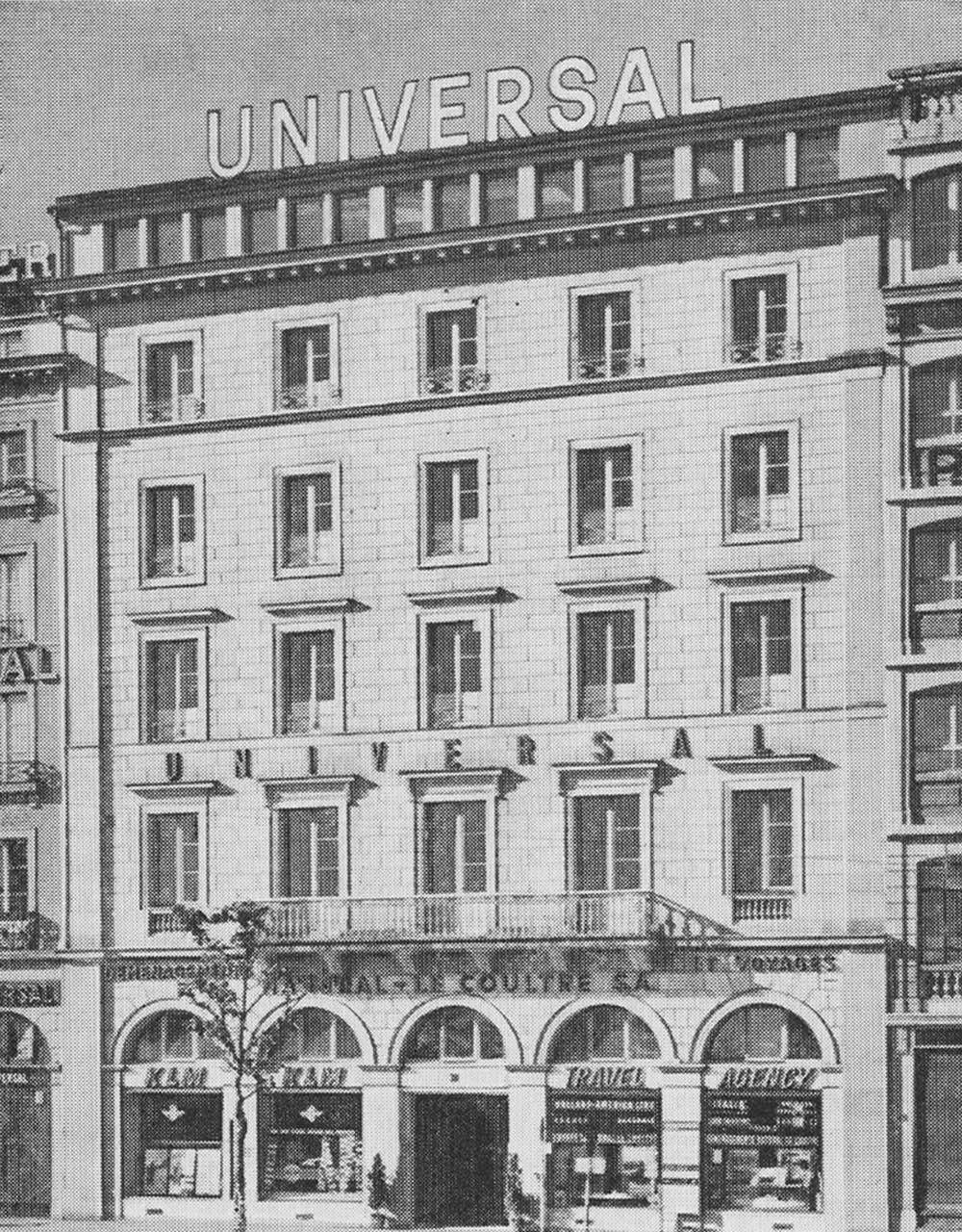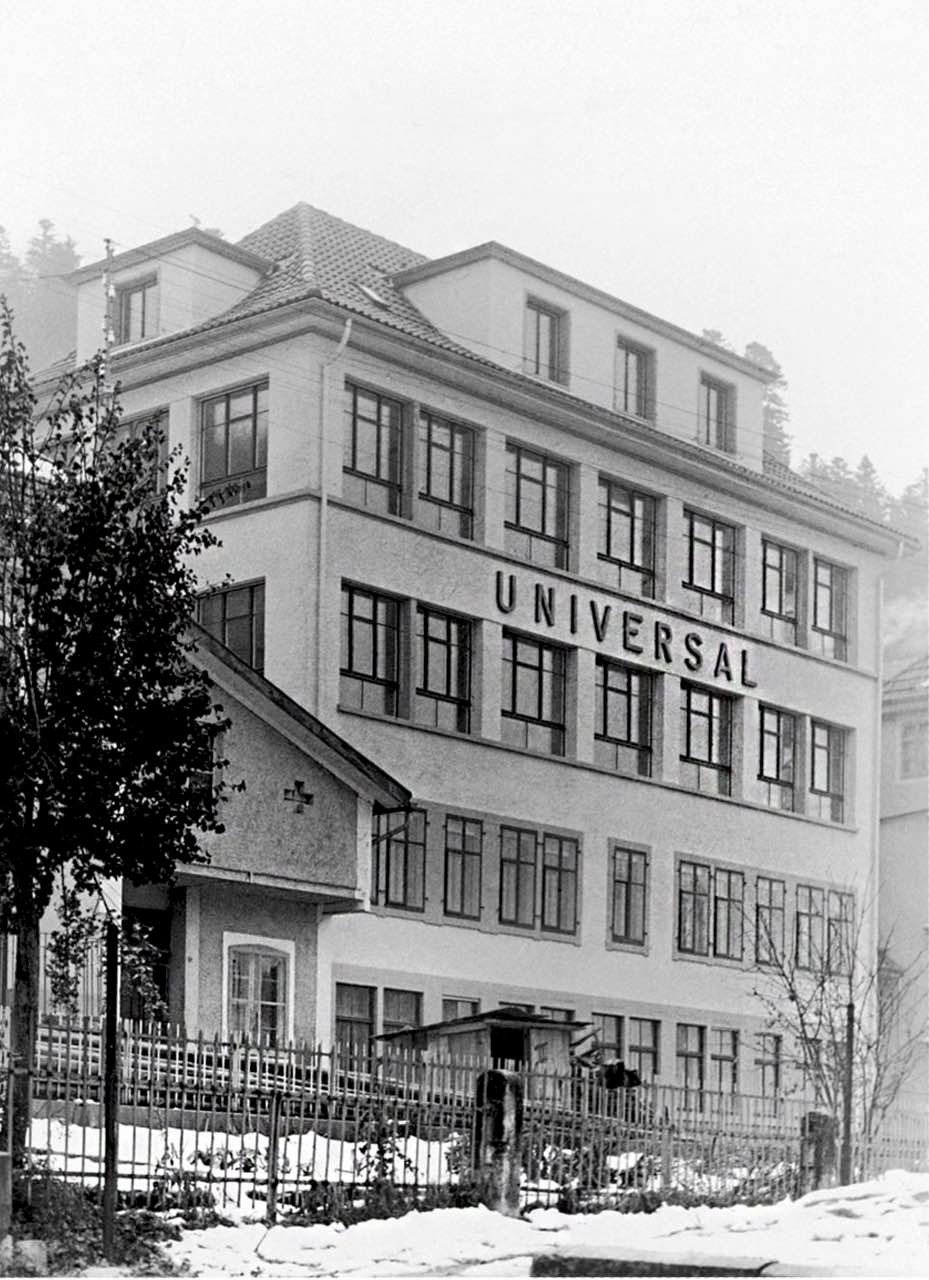Gearing Up For The Revival Of Universal Genève — Some History And What To Expect
It has been the better part of a year since Partners Group and CVC Group — the owners of Breitling — announced their acquisition of Universal Genève. Things may have been quiet on the outside, but rest assured plenty was going on behind closed doors. Now we are close to seeing the first fruits of that labor. It’s not much longer before we get to see the first new watch.
Gearing up to the relaunch, Universal Genève launches its new branding and website today. It is all still quite secretive. In fact, I did not even get to preview the new website prior to writing this article. I did get to see some of the new branding and associated materials, which offer some insight as to where things might be headed. So let’s do a quick overview of UG’s history and some final pre-launch speculation of what could be coming.
The origins of Universal Genève
The brand can trace its roots back to 1894 when Numa-Émile Descombes and Ulysse-Georges Perret founded their company in Le Locle. They registered the ambitious-sounding trademark “Universal Watch.” It wasn’t until 1919 that the business moved to the Rue de Rhône in Geneva. By 1933, Raoul Perret, Ulysse-George’s son, had taken over the company. He guided the business to impressive heights over the following four decades.
Demand for chronographs soared during World War II. As a result, Universal Genève saw room to expand and opened a new production facility in Les Ponts-de-Martel in 1941. By 1956, the brand had expanded once more and built a brand-new manufacture designed by modernist architect Paul-André Davoine. This was surely the result of Raoul Perret’s passion for architecture.
The brand cemented its reputation in 1966 by taking the world record for the thinnest automatic movement, caliber 66. This caliber powered the White Shadow, Gilt Shadow, and Golden Shadow watches and retained the record until 1978. In 1970, fashion designer Roberta Di Camerino came in to design UG ladies’ watches from her fashion-design perspective. Universal Genève was, after all, known as “Le Couturier de la Montre.” Unfortunately, by the late ’70s, the house had fallen into decline under the pressure of the Quartz Crisis. The Hong Kong-based Stelux company purchased the name, but it never lived up to its former glory again. Of course, if new ownership has its way, that will soon change.
Notable Universal Genève watches through the decades
Universal Genève specialized in the production of chronographs early on. One of the house’s first truly notable watches, however, was of a different kind altogether. The 1933 Ideo (nicknamed Cabriolet) was a rectangular watch that could be reversed to protect the crystal, much like Jaeger-LeCoultre’s Reverso. However, the UG version flipped on a single axis at 12 o’clock. Then, in 1936, the first chronograph with an hour totalizer debuted under the now-signature Compax name.
The collection expanded quickly, and by 1944, the brand had released another model that would become a household name, the Tri-Compax. This watch combined a three-register chronograph with a full calendar. The collection got an updated, sportier aesthetic in the 1960s. This saw the introduction of a new Tri-Compax that would become known by the name of a famous owner, Eric Clapton. Similarly, supermodel Nina Rindt’s name would forever be connected to a Compax model. Also in the mid-1960s, UG grabbed the record for the slimmest automatic watch at 2.5mm thick. The house maintained this record until 1978.
Of course, I cannot possibly jump from the 1940s straight to the ’60s when discussing Universal Genève. After all, its most iconic model saw the light of day in 1954. A 23-year-old Gérald Genta designed a watch to commemorate the historic SAS (Scandinavian Airlines System) flight from Kopenhagen to Los Angeles over the North Pole. This new route inspired the name Polerouter, which is quite possibly the first word that springs to mind when thinking of Universal Genève. The first models featured a bumper automatic caliber, which was quickly replaced by a micro-rotor movement. The tuxedo dial and micro-rotor can well be considered brand heroes.
The new branding
Now, I enjoy a history lesson as much as the next person. The above, however, is a summary of the brand’s history as currently promoted by the new owners in the press materials. These are the highlights they want to focus on. Make of that what you will, but I reckon that makes it safe to assume these are things they will build upon. We were already expecting returns of the Polerouter and Compax. However, the emphasis on the “Couturier de la Montre,” Ideo, and thinness record gives us plenty to think about.
The first things we get to see are the new logo and a bunch of artwork. The logo is an amalgamation of different vintage UG logos. It retains the classical U-over-Universal layout. “Genève” sits underneath in a smaller print. Throughout the brand’s history, we have seen these two-line versions as well as single-line “Universal Genève” layouts. I could speculate on the significance of this one, but I don’t think we should read too much into it. We do see a clear modernization of the logo, including a sleek new typography and less fuss than before. The other notable element is the Prussian-blue support color.
Then there is the collage art by artist Constantin Prozorov. I see a lot of color-locale from Geneva, saturated hues, and a very, very vintage vibe. If these images are anything to go by, I expect a lot of pre-WWII and mid-century aesthetics from the brand.
Working with Universal Genève collectors
I made a plea for evolved-vintage design over romantic vintage shortly after the new ownership was announced in 2023. Going by what I see here, the house may have taken a different direction. Of course, the proof of the pudding is in the eating. We will see what is what when we finally catch a glimpse of the first new watch.
The new owners involved a panel of established UG collectors and some watch-media veterans in their early decision-making. The new branding and approach are a result of that cooperation. This is a clever move because getting their support early on is key. To me, it shows a dedication to get it right from an aficionado’s perspective, not just commercially.
Another clever move is the release of an online UG magazine. You can subscribe to it on the brand’s website to receive regular updates and backstories. If anything, this will serve to lock in those interested and to reinvigorate awareness of the brand’s rich history.
Closing thoughts and expectations
I feel like I’ve been presented with some sort of cryptic puzzle here. One thing that stands out to me is the lack of gravitas. Much like with Breitling, the materials shown present as a little more youthful and playful than most heritage watch brands. I consider that a good thing because, to be frank, we have enough stuffy watch brands already.
The Polerouter, interestingly, will celebrate its 70th anniversary this November. We already have confirmation that Universal Genève and SAS will do something to commemorate this fact. Maybe we don’t have to wait so long anymore, dear Fratelli. We do have to wait a little longer for a full collection, though, as releases are currently planned for autumn 2026.
By the time this article is published, you will have access to the new UG website here. What do you think the new Universal Genève will be like? Let us know in the comments below!
This is a partnership post. Read about our transparency here.
















